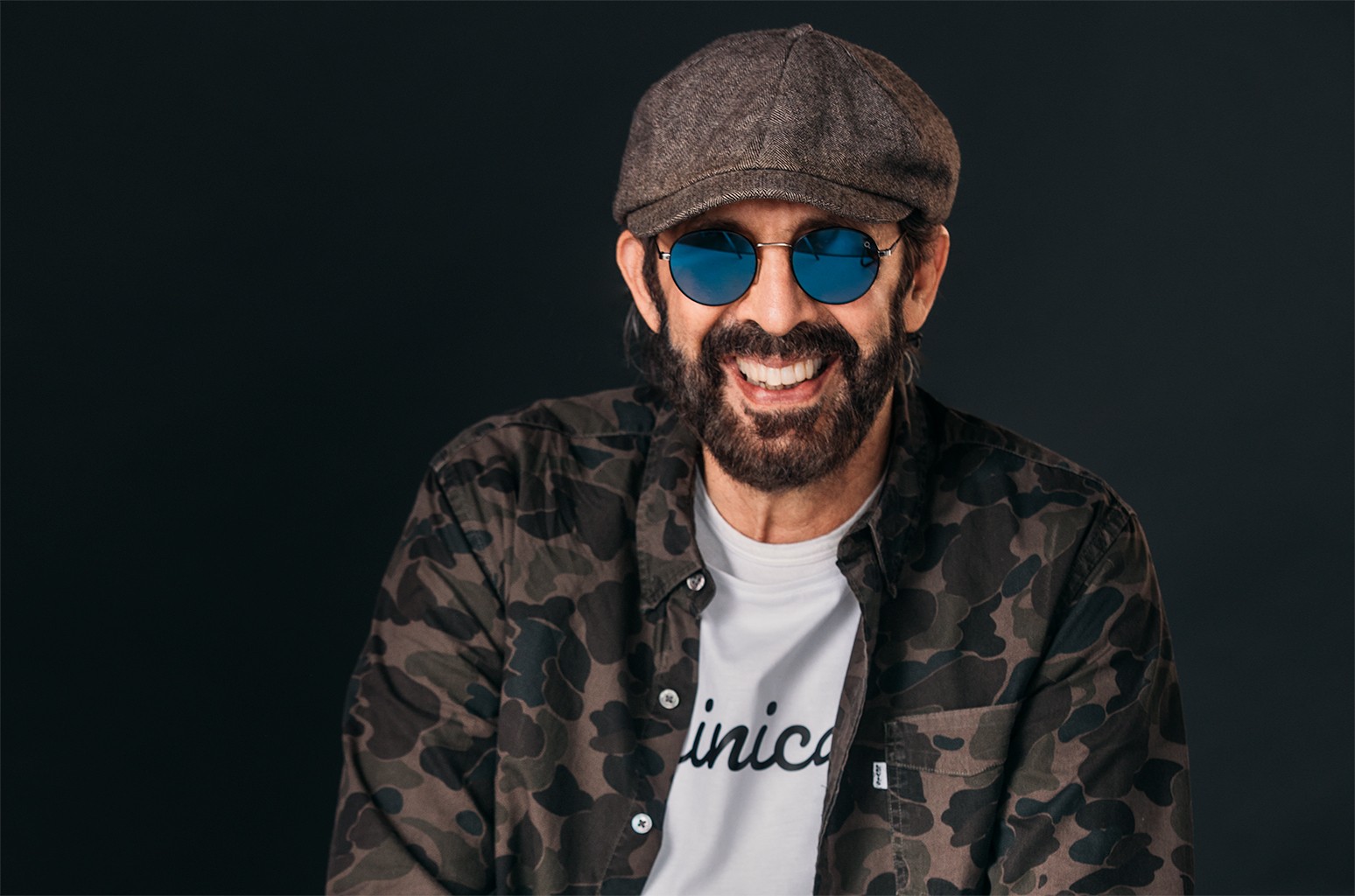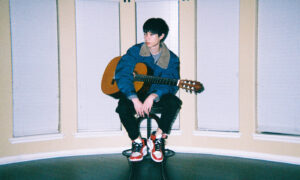Juan Luis Guerra is a Puerto Rican singer, songwriter, and musician. He has released over 50 albums in his career and has sold more than 70 million records worldwide.
Juan Luis Guerra is a Colombian singer-songwriter, musician, and composer. He was born in Bogota on August 20th, 1951. Guerra has been awarded several times for his music including Latin Grammy Awards and the Latin Songwriters Hall of Fame.
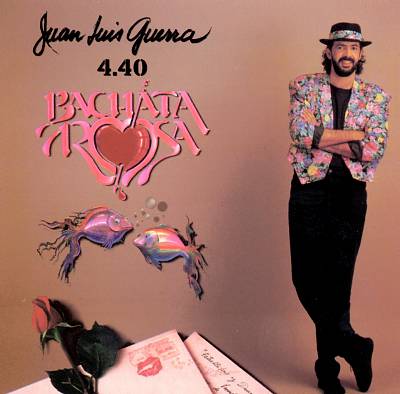 Juan Luis Guerra is a Dominican singer, songwriter, composer, and record producer who has sold millions of albums worldwide. He has sold over 70 million albums worldwide and received many industry accolades, including a staggering 21 Latin Grammys, thanks to his silky, multi-octave range and soulful delivery. He and his band 440 are well-known in the Latin music community for their merengue innovations and for reviving bachata as a commercial force. His music is rich and eclectic, including elements of bolero, salsa, early rock & roll, and even gospel. His album Bachata Rosa, released in 1990, had five hit songs and sold more than five million copies. While Areito, released in 1992, sparked controversy due to its political overtones, which were highlighted by the award-winning song and video “El Costo de la Vida,” it simply showed another facet of his creativity.
Juan Luis Guerra is a Dominican singer, songwriter, composer, and record producer who has sold millions of albums worldwide. He has sold over 70 million albums worldwide and received many industry accolades, including a staggering 21 Latin Grammys, thanks to his silky, multi-octave range and soulful delivery. He and his band 440 are well-known in the Latin music community for their merengue innovations and for reviving bachata as a commercial force. His music is rich and eclectic, including elements of bolero, salsa, early rock & roll, and even gospel. His album Bachata Rosa, released in 1990, had five hit songs and sold more than five million copies. While Areito, released in 1992, sparked controversy due to its political overtones, which were highlighted by the award-winning song and video “El Costo de la Vida,” it simply showed another facet of his creativity.
Para Ti from 2004 and La Llave de Mi Corazón from 2007 were both declared multi-platinum, earning him a total of five Grammys and Latin Grammys. A Son de Guerra, released in 2010, was certified two times platinum and won three Latin Grammy Awards. Todo Tiene Su Hora, released in 2014, topped the Latin album charts and placed in the top half of the Billboard 200. It grew in popularity because to the worldwide blockbuster hit song “Tus Besos,” which expertly blended bachata, doo wop, and early rock & roll. Literal, a widely varied and delightfully happy album that debuted in 2019 to acclaim and strong sales, reached at number seven on the tropical albums list.
Guerra grew up close to the National Music Gallery, the son of a professional baseball player. He was inspired by the Beatles and American hippy music as a teenager. He taught himself the fundamentals of guitar playing at first, but after winning a contest, he was awarded a scholarship at the National Conservatory. One of his teachers then assisted him in gaining admission to the renowned Berklee College of Music in Massachusetts, where he was exposed to the many jazz styles. He eventually missed the Dominican Republic and returned with his band 440 to experiment with mixing local African-influenced music, folk ballads, and jazz. The band’s name comes from the 440 Hertz universal tuning pattern for the “A” note. Guerra’s brother, José Gilberto, who used to sit and watch them practice, came up with the name. He once said that they should name themselves that since they were so concerned with keeping in tune.
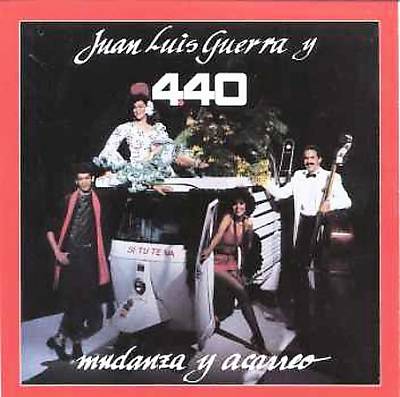 Soplando, their first album, failed to make an impression. Mudanza y Acarreo and Mientras Más Lo Pienso Tu, Guerra and 440 added merengue and lightning-quick riffs of “perico ripiao” to their next attempts, and found instant popularity with a youthful audience weary of hearing the same old stuff. The new song, dubbed “bachata-merengue,” quickly gained a lot of popularity in the Dominican Republic. The trio was chosen by their government to represent the country in the OTI (Organization of Ibero American Television) International Music Festival. Guerra and 440 scored one of their greatest successes in 1988 with Ojalá Que Llueva Café, which went on to become Latin America’s third best-selling album. Maridalia Hernández, his main vocalist, departed to pursue a solo career in Europe that year, leaving Guerra as the new lead singer.
Soplando, their first album, failed to make an impression. Mudanza y Acarreo and Mientras Más Lo Pienso Tu, Guerra and 440 added merengue and lightning-quick riffs of “perico ripiao” to their next attempts, and found instant popularity with a youthful audience weary of hearing the same old stuff. The new song, dubbed “bachata-merengue,” quickly gained a lot of popularity in the Dominican Republic. The trio was chosen by their government to represent the country in the OTI (Organization of Ibero American Television) International Music Festival. Guerra and 440 scored one of their greatest successes in 1988 with Ojalá Que Llueva Café, which went on to become Latin America’s third best-selling album. Maridalia Hernández, his main vocalist, departed to pursue a solo career in Europe that year, leaving Guerra as the new lead singer.
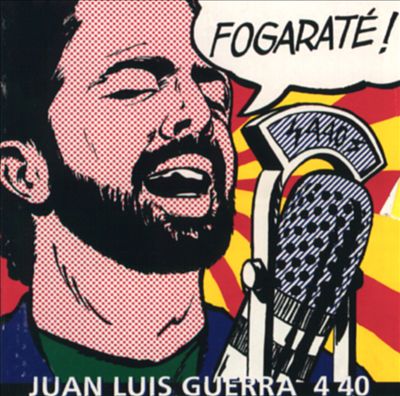 Bachata Rose was published in 1991, and its five smash songs catapulted it to hit status throughout the Americas, earning Guerra his first Grammy in the United States. Guerra and his band were soon touring the continental United States as well as the Latin tropics, thanks to the album’s popularity in Los Angeles. Areito, his second album, sparked debate in the Dominican Republic since it spoke out against socioeconomic injustices that the poor believed Guerra had never directly experienced. Nonetheless, he was praised for his earnestness and desire to improve his often-troubled country. Guerra’s musical approach shifted once again with Fogaraté, released in 1995. This album included more African soukous music, which is becoming more popular. Guerra won three Grammys for Best Merengue Performance, Best Tropical Song for “El Niagara en Bicicleta,” and Best Engineered Album for his 1998 album, Ni Es Lo Mismo Ni Es Igual, at the inaugural annual Latin Grammy Awards in autumn 2000.
Bachata Rose was published in 1991, and its five smash songs catapulted it to hit status throughout the Americas, earning Guerra his first Grammy in the United States. Guerra and his band were soon touring the continental United States as well as the Latin tropics, thanks to the album’s popularity in Los Angeles. Areito, his second album, sparked debate in the Dominican Republic since it spoke out against socioeconomic injustices that the poor believed Guerra had never directly experienced. Nonetheless, he was praised for his earnestness and desire to improve his often-troubled country. Guerra’s musical approach shifted once again with Fogaraté, released in 1995. This album included more African soukous music, which is becoming more popular. Guerra won three Grammys for Best Merengue Performance, Best Tropical Song for “El Niagara en Bicicleta,” and Best Engineered Album for his 1998 album, Ni Es Lo Mismo Ni Es Igual, at the inaugural annual Latin Grammy Awards in autumn 2000.
Guerra took a break from recording after almost three years of nonstop touring. He made his comeback in 2004 with Para Ti, his first studio album in six years. The album received a lot of positive feedback from critics and fans. At the 2005 Grammy Prizes, he received two awards. The song “Las Avispas” won in both the Best Gospel Pop and Tropical Merengue categories, marking the first time a song has won in both categories at the same time in the award show’s history. Guerra went on a rigorous tour once again. At the Berklee College of Music’s 50th anniversary performance, he performed with a heavyweight lineup of luminaries, including Herbie Hancock, Michel Camilo, Pat Metheny, and Paul Simon. He was a part of U2’s 360 tour and the Rolling Stones’ A Bigger Bang tour as an opening act.
In the early spring of 2007, he published his second album, La Llave de Mi Corazón. It debuted at number one on the Billboard Latin charts and stayed there for four weeks. For the album, he received three Latin Grammys. In 2010, he featured in the music video for Enrique Iglesias’ song “Cuando Me Enamoro” as a duet partner. The song debuted at number one on Billboard’s Latin chart and stayed there for 17 weeks. The pre-release song “Bachata en Fukuoka,” off his upcoming Asondeguerra album in 2010, followed. The single debuted at number one, dethroning the duet’s success. Guerra’s second release, Asondeguerra Tour, was a live album that recorded the previous album’s tour; it was released in May of 2013 and featured fan favorites, reaching the top rungs of the Tropical charts.
Guerra released the song and video for “Tus Besos” in October of 2014, a bachata tune strongly influenced by and flavored with the sound of early 1960s doo wop. Its video was still getting airplay a year later, with more than 200 million views, and the song was at the top of many industry and radio charts. In November, he released his studio album Todo Tiene Su Hora. It was eventually certified platinum and reached number one on the charts, earning him a Latin Grammy for Album of the Year in 2015.
With the release of the song and video for “Kitipun” in 2019, Guerra and 440 gave their fans a heads up that an album was on the way. It rapidly climbed the streaming and industry rankings after being shot in a Tik Tok-like narrative manner. Literal, a pleasant full-length album released in May, included a variety of genres including bachata, merengue, salsa, jazz, and pop. It reached number seven on the Tropical albums chart and received gold certification, while peaking at number 31 on the Latin albums rankings.
Juan Luis Guerra is a Colombian singer-songwriter and musician. He was born in Medellin, Colombia on December 15th, 1952. His style of music is called Cumbia. This genre is popular throughout Latin America. Reference: juan luis guerra interesting facts.
Frequently Asked Questions
What is Juan Luis Guerra known for?
Juan Luis Guerra is a Colombian singer and songwriter. He has released three studio albums, two live albums, three compilation albums, and one remix album.
What song made Juan Luis Guerra famous?
Despacito by Luis Fonsi and Daddy Yankee
Does Juan Luis Guerra write his own songs?
Yes, he does.
Related Tags
- juan luis guerra music genre
- juan luis guerra family
- juan luis guerra concert
- juan luis guerra merengue songs
- juan luis guerra albums

